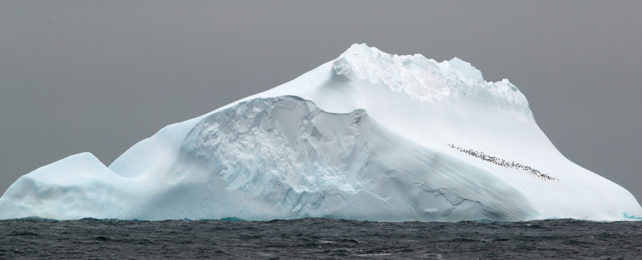As we're a species with ever-shrinking attention spans, it can be difficult to comprehend just how long life has been around on Earth. However, try to get your head around this one: Scientists have dug up fragments of DNA dating back 1 million years ago.
Found beneath the floor of the Scotia Sea, north of the Antarctic, these fragments of organic material can be invaluable in charting the history of the region – mapping out what has lived in the ocean and across what kind of time spans.
Technically referred to as sedaDNA – for sedimentary ancient DNA – the recovered samples are likely to prove useful in the ongoing efforts to understand how climate change could affect Antarctica in the future.
"This comprises by far the oldest authenticated marine sedaDNA to date," says marine ecologist Linda Armbrecht from the University of Tasmania in Australia.
SedaDNA is found in many environments, including terrestrial caves and subarctic permafrost, which have yielded sedaDNA dating back 400,000 and 650,000 years, respectively.
Cold temperatures, low oxygen, and a lack of UV radiation make polar marine environments like the Scotia Sea terrific locations for sedaDNA to remain intact, just waiting for us to find it.
The recovered DNA was extracted from the ocean floor in 2019 and went through a comprehensive contamination control process to ensure that the age markers embedded in the material were accurate.
Among the other findings, the team discovered diatoms (single-celled organisms) that dated back 540,000 years ago. This all helps to inform our overview of how this part of the world has evolved over vast expanses of time.
The team was able to link diatom abundance to warmer periods – the last of which in the Scotia Sea was around 14,500 years ago. That led to an increase in overall marine life activity across the Antarctica region.
"This is an interesting and important change that is associated with a worldwide and rapid increase in sea levels and massive loss of ice in Antarctica due to natural warming," says geologist Michael Weber from the University of Bonn in Germany.
This latest study is evidence that these sedaDNA techniques can be helpful in reconstructing ecosystems across hundreds of thousands of years, giving us a whole new level of insight into how the oceans have changed.
Scientists are steadily improving at removing these ancient DNA fragments from the ground and removing the 'noise' and interference left by all the modern DNA that's been around since to get an authentic look at the past.
Understanding more about past climate shifts and how the ocean ecosystem responded means more accurate models and predictions for what might happen next around the South Pole.
"Antarctica is one of the most vulnerable regions to climate change on Earth, and studying the past and present responses of this polar marine ecosystem to environmental change is a matter of urgency," write the researchers in their published paper.
The research has been published in Nature Communications.
